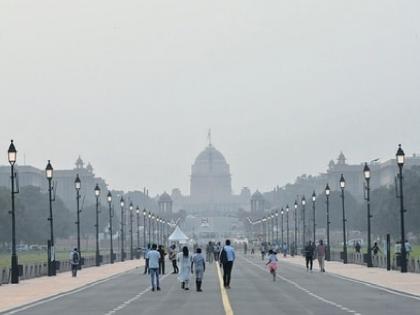Delhi AQI Deteriorates to 274, Slips into ‘Very Poor’ Category Ahead of Diwali
By Lokmat Times Desk | Updated: October 19, 2025 10:03 IST2025-10-19T10:01:56+5:302025-10-19T10:03:40+5:30
As the winter chill begins to set in, Delhi-NCR’s air quality continues to worsen, rapidly slipping into the “very ...

Delhi AQI Deteriorates to 274, Slips into ‘Very Poor’ Category Ahead of Diwali
As the winter chill begins to set in, Delhi-NCR’s air quality continues to worsen, rapidly slipping into the “very poor” zone. With Diwali approaching, experts warn of a sharp surge in pollution levels as firecrackers combine with stubble burning, dust, and vehicular emissions. The capital’s already heavy air is expected to grow denser in the days following the festivities. The city has once again turned into a pollution hotspot, raising serious concerns for residents and health authorities about prolonged exposure to harmful air particles.
According to AQI.in, a private air quality monitoring agency, Delhi’s air quality index stood at 257 at 7 am, categorised as “severe”. The Air Quality Early Warning System (EWS) reported a slightly higher reading of 274, indicating a further decline in conditions. On Saturday (October 18), a day before Chhoti Diwali, several localities registered air quality in the “very poor” category, with an overall AQI of 255. Areas like Ashok Vihar recorded the highest readings, ranging from 326 to 412, pushing them into the “hazardous” zone.
| Area | AQI |
|---|---|
| Anand Vihar | 418 |
| Wazirpur | 324 |
| Bawana | 284 |
| Model Town | 277 |
| Dwarka | 248 |
| Jahangirpuri | 246 |
| Shahdara | 320 |
| Saket | 247 |
| Mundka | 202 |
| Narela | 205 |
| Rohini Sector 24 | 350 |
| Alipur | 223 |
| Yojna Vihar | 354 |
According to AQI.in estimates, breathing in Delhi is currently as harmful as smoking 6.1 cigarettes a day, based on 24-hour average PM2.5 levels. On Sunday morning, the capital recorded a temperature of 21.2°C with 95% humidity. In the NCR, pollution levels were similarly alarming — Ghaziabad’s AQI was 299, Noida recorded 298, and Greater Noida stood at 268, all within the “severe” category. The PM2.5 concentration in Delhi touched 174 µg/m³, nearly 12 times higher than the WHO’s recommended limit of 15 µg/m³.
The World Health Organization warns that prolonged exposure to PM2.5 can trigger cardiovascular and respiratory diseases, including lung cancer, stroke, and COPD. The AQI scale classifies air quality as follows — Good (0–50), Satisfactory (51–100), Moderately Polluted (101–200), Poor (201–300), Very Poor (301–400), and Severe (401–500). As the index climbs higher, breathing becomes increasingly harmful. Health experts urge residents across Delhi-NCR to wear masks, reduce outdoor movement, and avoid strenuous physical activities such as jogging or exercising in open areas to minimize inhalation of toxic air.
Open in app